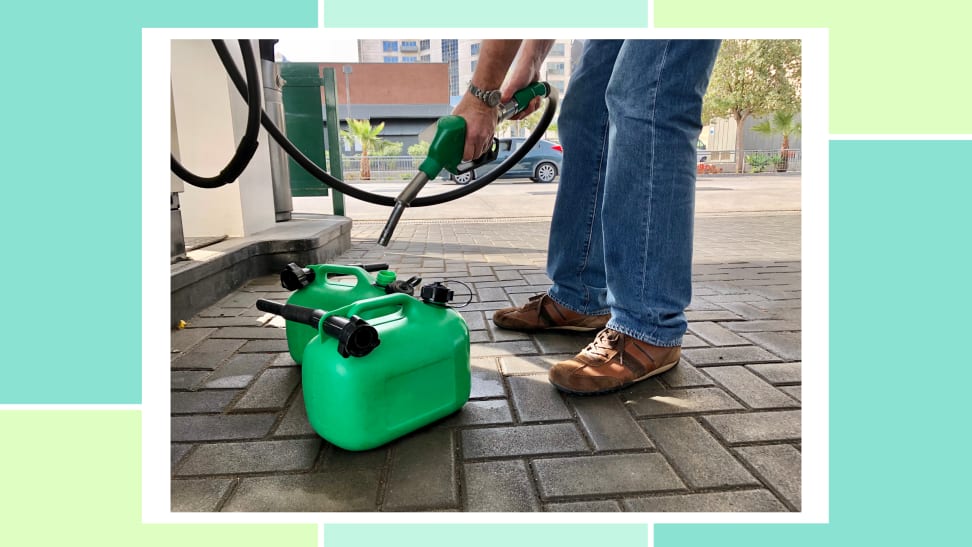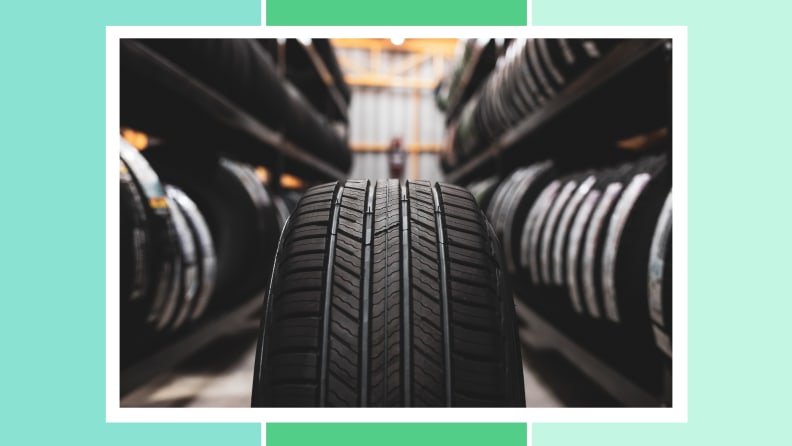 Credit:
Reviewed / Getty Images / cmspic
Credit:
Reviewed / Getty Images / cmspic
Recommendations are independently chosen by Reviewed's editors. Purchases made through the links below may earn us and our publishing partners a commission.
While the price for gas continues to fall from its historic June high, one look at a receipt reminds Americans nationwide that prices are still much more expensive than they were this time last year.
What would you add to your wardrobe if you had a little extra money? We're giving away two $250 Nordstrom gift cards, so let's find out. Enter to win between now and Sept. 30, 2022.
Why is gas so expensive?
There are a few key reasons as to why gas prices have risen so dramatically over the past year. Initially, domestic demand for gas rose in late 2021 faster than supply could keep up as more people began to drive after a year of decreased car use due to the pandemic. This problem was only exacerbated by the Russian invasion of Ukraine, as the subsequent sanctions levied against Russia meant that America became cut off from one of the world's largest exporters of gasoline. Gas prices have begun to fall thanks to a decrease in demand as people have decided to drive less, as well as following the release of oil from the United States' strategic petroleum reserve and price cuts from the oil industry.
With gas being cheaper than it was a month ago, you might be thinking that it would be a great idea to go to your favorite gas station and stock up on gas before the price spikes again. But there are a few things you should know about gas stockpiling before you stuff your trunk with as many gas containers as it can hold.
Should you store gas?

The short answer: no. Not only is stockpiling gas dangerous, but after 3-6 months it's not as viable.
The first thing you'll want to do is determine if stockpiling gas is even a good idea. It's important to remember that everyone is going through this gas crisis, so taking more than you need will negatively impact others. The more gas you stockpile is less gas for someone else who could use it immediately.
Due to economics, stockpiling has a disastrous effect on prices. Prices have calmed in part due to the fact that demand has decreased, and prices will only remain relatively low for as long as supply and demand are essentially equal. Many people buying gasoline en masse will drive up demand while subsequently driving down supply, resulting in increased prices. In short, stocking up on gas to beat the price may end up making the price even higher.
Beyond this, you might not even be able to stockpile. According to the American Petroleum Institute (API), many municipal fire codes limit the amount of gasoline you can store outside a specialized storage cabinet to 25 gallons, as per an OSHA regulation. This amount of gas won’t last you very long.
Finally, long-term gas storage isn't particularly useful, as gas isn't long-lasting. Without treating it, gasoline tends to only be usable for three-to-six months. This is because gasoline is a chemically complex material comprising many different compounds that decrease in effectiveness upon undergoing chemical changes. Gasoline can evaporate (meaning the liquid turns into a gas) and oxidize (when the compounds in the gasoline bond with the oxygen in the air), both leading to it not combusting as efficiently in your engine. This, in turn, will cause decreased efficiency as fuel in your engine combusts prematurely, accompanied by an audible “pinging” sound, among other issues.
How to store gasoline
Even if you don't plan on stockpiling your gas, storing any amount of gasoline requires that you follow proper safety procedures. As stated before, your local government will have specific guidelines regarding how much gasoline you're allowed to store, so you'll want to check on the legalities before you buy gasoline for storage.
It's vital that you store gasoline in containers approved by agencies such as the Environmental Protection Agency (EPA) or the Department of Transportation (DOT), as gasoline can eat through other materials not suited to hold it. These approved containers come in either plastic or metal and hold no more than five gallons each.
When filling a container with gasoline, make sure it's on stable ground, away from any source of ignition. To prevent spillage, you should never fill the container to the brim. When transporting gasoline, make sure the containers are upright in your trunk—never where you breathe.
The API recommends storing gas containers at room temperature in a dry area. The containers should be placed away from heat sources and ignition sources to prevent combustion. Additionally, to mitigate damage from accidental combustion, containers should be kept in an area away from your home such as a shed or garage.
How to make your tank last longer

Old or damaged tires can cause your car's engine to overexert itself and ultimately, burn more gas.
The best way to save on gas, no matter how high or low the prices at the pumps get, is to drive more efficiently. When you drive efficiently, your car uses less gasoline to get to your destination, meaning your tank of gas will last longer.
One way to make sure that you're driving efficiently is to ensure your car's equipment is in good condition. As there's perhaps no part of a car more important than tires, they should be the first thing you check. Tires that are in poor shape are an annoyance at best, costing you more money as your engine works harder to push its load on faulty tires, and a danger at worst if your tires blow out in the middle of the freeway. If you're replacing your tires outright, then consider getting a tire with low rolling resistance such as the Michelin Energy Saver A/S. This ensures that your tire requires less energy, and thus fuel, to remain rolling.
Another way to curb your fuel use is to make changes to your own driving. Next time you go for a ride, take note of your tachometer, which measures rotations-per-minute (RPM). It shows how hard your engine is working and how much fuel you're burning at a given time. You'll want to decrease your RPM as much as possible. One way to do this is by driving the speed limit—the faster you go, the more fuel you burn. You'll also want to limit the number of stops you're making, as it takes more fuel to accelerate from a standstill. This doesn't mean blitzing through stop lights and stop signs but instead gliding toward stops when safe and possible. Use your GPS to find the most efficient route to your destination.
Driving alternatives to save on gasoline
Of course, the only surefire way to save on gas is to not use gas at all—that means either riding on two wheels instead of four or hoofing it to your destination. Driving is a fixture of our modern lives, so much so that our cities are built with cars in mind and it often feels impossible to get around without doing so. That said, if you need to go somewhere close by, it might be worth attempting to walk or bike to your destination. Plus, you get exercise in while doing so.
For walking, we recommend picking up a pair of New Balance 993 shoes. New Balance is known for its comfort across various foot shapes. We loved the 993 shoe in particular for their sturdiness and versatility (they look great as a walking shoe, jogging shoe or just as a fashion statement).
If you prefer biking, you should try the Schwinn Discover Hybrid bike. It has many positive Amazon reviews that can attest to its quality. With a built-in luggage rack, the Schwinn Discover is an excellent choice for commuting.
Other ways to save money on gasoline

Wholesale superstores like Costco and Sam's Club often offer their members insider perks for things like gas, automative items, and even optics.
Another way to reduce your gas costs is by shopping around for less expensive gas. That’s where it pays to have a wholesale club membership. In addition to money you can save on groceries, a wholesale club membership will save you money on gas as you'll gain access to their exclusive pumps, which tend to have the least expensive gas around whether you're filling up your tank with regular or premium fuel.
When you’re paying at the pump, take advantage of the benefits of using a gas card, a credit card that gives you cash back rewards from spending money on gas. For example, the Citi Custom Cash card allows you to earn 5% cash back from the first $500 per month that you spend on your top category for spending, meaning you could earn up to $300 cash back per year.
Lastly, there are options for cheaper gas and more efficient driving routes right on your smartphone. Between using your phone’s GPS to map gas-efficient routes to downloading apps such as GasBuddy or GasGuru, you can use less gas in your travels and fill up your tank for less.



